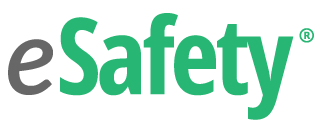There are many occupational exposure limits used around the world. These limits define the airborne concentration an individual may be exposed to over a certain period. Let’s discuss some of the common occupational exposure limits that you may see listed on a SDS.
OSHA’s regulatory limits include the Permissible Exposure Limit, or PEL, which is the maximum concentration of airborne contaminants to which an employee may be exposed, over an eight-hour time-weighted average, or TWA.
The Short-Term Exposure Limit, or STEL, is the maximum concentration of an airborne contaminant averaged over a 15-minute TWA.
Another exposure limit, the Ceiling, is an instantaneous airborne concentration that cannot be exceeded at any time.
You may also see recommended occupational exposure limits, such as the American Conference of Governmental Industrial Hygienists Threshold Limit Value, or ACGIH TLV. The ACGIH TLVs include the TLV-TWA, TLV-STEL, and the TLV-Ceiling.
The National Institute for Occupational Safety and Heath Recommended Exposure Limit, or NIOSH REL, is for a work shift of up to 10 hours and there are also designated STEL and Ceiling limits.
The ACGIH and NIOSH are national consensus agencies. The ACGIH TLVs and the NIOSH REL are guidelines and are not enforced by OSHA. The OSHA PEL, STEL, and Ceiling are the regulatory limits and are enforced by law. Some states also have their own OSHA plan with enforceable limits.
Exposure limits are usually shown in units, such as parts per million, or ppm, of air or milligrams per cubic meter, or mg/m3, of air.
To help visualize how small 1 ppm is, it is the equivalent of putting one drop of water, from an eyedropper, into a 10-gallon tank. It is equal to 0.0001% or one part in a million.
INTERESTED IN LEARNING MORE?
Get more information about the Hazard Communication course here.
